


 |
 |
 |
During the Cold War, high altitude surveillance flights of the U-2 dragon Ladies, the A-12 Oxcart and the YF-12 Blackbird and their pilots were veiled in secrecy to make their existence deniable.
| MODEL | #BUILT | #LOST |
| A-12 | 13 | 5 |
| M-21 | 2 | 1 |
| YF-12 | 3 | 2 |
| SR-71A | 29 | 11 |
| SR-71B | 2 | 1 |
| SR-71C | 1 | 0 |
FLIGHT RECORDS
A-12
| SN | #Flights | #Hours |
| 60-6924 | 332 | 418.2 |
| 60-6925 | 162 | 177.9 |
| 60-6926 | 79 | 135.3 |
| 60-6927 | 614 | 1076.4 |
| 60-6928 | 202 | 334.9 |
| 60-6929 | 105 | 169.2 |
| 60-6930 | 258 | 499.2 |
| 60-6931 | 232 | 453.0 |
| 60-6932 | 268 | 410.49 |
| 60-6933 | 217 | 406.3 |
| 60-6937 | 177 | 345.8 |
| 60-6938 | 197 | 369.9 |
| 60-6939 | 10 | 8.3 |
| M-21 | ||
| 60-6940 | 80 | 123.9 |
| 60-6941 | 95 | 152.7 |
| YF-12A | ||
| 60-6934 | 80.9 | |
| 60-6935 | 534.7 | |
| 60-6936 | 439.8 |
The following list of A-12 and YF-12 losses speaks volumes of just how dangerous the Cold War was.
All aircraft are listed by their original Air Force serial numbers.
60-6926 (A-12)
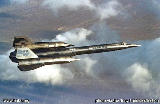
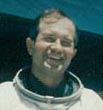 This was the second A-12 to fly but the first to crash. On 24 May 1963, CIA pilot Ken Collins was flying an inertial navigation system test mission. After entering clouds, frozen water fouled the pilot-static boom and prevented correct information from reaching the standby flight instruments and the Triple Display Indicator. The aircraft subsequently entered a stall and control was lost completely followed by the onset of an inverted flat spin. Ken ejected safely and the wreckage was recovered in two days. Persons at the scene were identified and requested to sign secrecy agreements. Even today, the cover story for the press described the accident as occurring to an F-105, and is still listed in this way on official records.
This was the second A-12 to fly but the first to crash. On 24 May 1963, CIA pilot Ken Collins was flying an inertial navigation system test mission. After entering clouds, frozen water fouled the pilot-static boom and prevented correct information from reaching the standby flight instruments and the Triple Display Indicator. The aircraft subsequently entered a stall and control was lost completely followed by the onset of an inverted flat spin. Ken ejected safely and the wreckage was recovered in two days. Persons at the scene were identified and requested to sign secrecy agreements. Even today, the cover story for the press described the accident as occurring to an F-105, and is still listed in this way on official records.
60-6928 (A-12)

 This aircraft was lost on 5 January 1967 during a training sortie flown from Groom Lake. Following the onset of a fuel emergency caused by a failing fuel gauge, the aircraft ran out of fuel only minutes before landing. CIA pilot Walter Ray was forced to eject. Unfortunately the ejection seat man-seat separation sequence malfunctioned and Ray was killed on impact with the ground, still strapped to his seat.
This aircraft was lost on 5 January 1967 during a training sortie flown from Groom Lake. Following the onset of a fuel emergency caused by a failing fuel gauge, the aircraft ran out of fuel only minutes before landing. CIA pilot Walter Ray was forced to eject. Unfortunately the ejection seat man-seat separation sequence malfunctioned and Ray was killed on impact with the ground, still strapped to his seat.
60-6929 (A-12)
-NO IMAGE OF THE ARTICLE AVAILABLE-
 This aircraft was lost on 28 December 1965 seven seconds into an FCF (Functional Check Flight) from Groom Lake performed by CIA pilot Mel Vojvodich. The SAS (Stability Augmentation System) had been incorrectly wired up, and the pilot was unable to control the aircraft 100 feet above the runway. The pilot ejected safely.
This aircraft was lost on 28 December 1965 seven seconds into an FCF (Functional Check Flight) from Groom Lake performed by CIA pilot Mel Vojvodich. The SAS (Stability Augmentation System) had been incorrectly wired up, and the pilot was unable to control the aircraft 100 feet above the runway. The pilot ejected safely.
A similar accident occurred when the first production Lockheed F-117 was flown on 20 April 1982 by Bob Ridenaeur. It's control system had been hooked up incorrectly. Ridenaeur survived the accident but had injuries serious enough to remove him from flight status.
At the time of Mele's crash, Col. Slip Slater, commander of the 1129th SAS at Groom Lake was in California visiting his 
 daughter during the Christmas holiday. This left Colonel Holbury in command at the facility. Maj. Harold Burgeson was on duty at the
daughter during the Christmas holiday. This left Colonel Holbury in command at the facility. Maj. Harold Burgeson was on duty at the Ops building when the accident occurred.Hearing that Mele had just crashed, he headed for the Ops vehicle at a dead run. Just as he reached the outside gate Col Holbury screeched to a halt in his staff car, picked him up and they went to the site together. After assuring that Mele was OK they took a look at the wreckage before going to see him. The aircraft was grossly out of trim. Project Test Pilot, Denny Sullivan was in another station wagon monitoring the take-off and narrowly missed Mel when he drove to the crash site.
Ops building when the accident occurred.Hearing that Mele had just crashed, he headed for the Ops vehicle at a dead run. Just as he reached the outside gate Col Holbury screeched to a halt in his staff car, picked him up and they went to the site together. After assuring that Mele was OK they took a look at the wreckage before going to see him. The aircraft was grossly out of trim. Project Test Pilot, Denny Sullivan was in another station wagon monitoring the take-off and narrowly missed Mel when he drove to the crash site.
 Maj. Roger Andersen was on duty in the Command Post monitoring the tower frequencies during take -off. As soon as he heard that the aircraft crashed, he ran to the front of the operations building, jumped into one of the station wagons and headed out on the lake bed. It was about dusk and the fire trucks were on the scene quickly. Mele had landed quite close to where the bird crashed. One of the fire trucks was also quite close to Mel. Heavy black smoke and orange flames boiled from the wreckage until the fire trucks gained control. Andersen recalls some fuel from the crash area flowing out onto the lake bed and getting under a thin layer of ice. It was burning under the ice with an eerie bluish white flame. It looked like a large votive candle as darkness began to arrive at Groom Lake.
Maj. Roger Andersen was on duty in the Command Post monitoring the tower frequencies during take -off. As soon as he heard that the aircraft crashed, he ran to the front of the operations building, jumped into one of the station wagons and headed out on the lake bed. It was about dusk and the fire trucks were on the scene quickly. Mele had landed quite close to where the bird crashed. One of the fire trucks was also quite close to Mel. Heavy black smoke and orange flames boiled from the wreckage until the fire trucks gained control. Andersen recalls some fuel from the crash area flowing out onto the lake bed and getting under a thin layer of ice. It was burning under the ice with an eerie bluish white flame. It looked like a large votive candle as darkness began to arrive at Groom Lake.
Andersen spoke to Mel a number of times before he died and on one occasion they discussed the December 28th crash. Mele had sprained his ankle when he bailed out and when he returned to L.A. his wife, Carol, asked him why he was limping. He told her that he had sprained his ankle playing tennis.


 Maj. Burgeson was a member of the accident board where the Lockheed team determined that the SAS connections had been reversed so that Pitch and Yaw signals were misinterpreted. A few days later Col. Slater, the project pilots, Major Burgeson and Bill Park were sent to Beale to check the cable reversal out in their new simulator. Accompanying them were Mele and a Col from Wright Pat. Bill Park took the first flight in the simulator with the cables reversed while the rest waited in an adjacent room. Bill Park had a tremendous sense of humor and when he returned he winked at Burgeson then remarked that it was a rough ride but flyable. Burgeson then took his flight and when he returned he continued the charade with a similar remark. According to Burgeson, Mele looked so crestfallen that they burst into laughter and confessed that they had both crashed in the simulator.
Maj. Burgeson was a member of the accident board where the Lockheed team determined that the SAS connections had been reversed so that Pitch and Yaw signals were misinterpreted. A few days later Col. Slater, the project pilots, Major Burgeson and Bill Park were sent to Beale to check the cable reversal out in their new simulator. Accompanying them were Mele and a Col from Wright Pat. Bill Park took the first flight in the simulator with the cables reversed while the rest waited in an adjacent room. Bill Park had a tremendous sense of humor and when he returned he winked at Burgeson then remarked that it was a rough ride but flyable. Burgeson then took his flight and when he returned he continued the charade with a similar remark. According to Burgeson, Mele looked so crestfallen that they burst into laughter and confessed that they had both crashed in the simulator.
60-6932 (A-12)
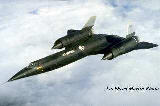
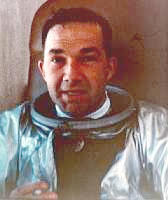 This aircraft was lost in the South China Sea on 5 June 1968. CIA pilot, Jack Weeks was flying what was to be the last operational A-12 mission from the overseas A-12 base at Kadena AB, Okinawa. This flight was a redeployment preparation and functional check flight due to replacement of the right engine. The loss was due to an in flight emergency and the pilot did not survive. Once again the official news release identified the lost aircraft as an SR-71 and security was maintained. A few days later the two remaining planes on Okinawa flew to the US and were stored with the remainder of the OXCART family.
This aircraft was lost in the South China Sea on 5 June 1968. CIA pilot, Jack Weeks was flying what was to be the last operational A-12 mission from the overseas A-12 base at Kadena AB, Okinawa. This flight was a redeployment preparation and functional check flight due to replacement of the right engine. The loss was due to an in flight emergency and the pilot did not survive. Once again the official news release identified the lost aircraft as an SR-71 and security was maintained. A few days later the two remaining planes on Okinawa flew to the US and were stored with the remainder of the OXCART family.
During the Oxcart and Blackshield programs there existed a flight monitoring system identified as Birdwatcher. The Birdwatcher constantly monitored various vital aircraft system functions, as well as equipment functions. If and when established limits and equipment activity were sensed, the Birdwatcher would key and modulate the HF transmitter with a coded signal. The coded signal was a multiplexed sample of each monitored item, including the item which triggered the Birdwatcher. Thus, the intended receiver operator could determine which aircraft system or equipment triggered the unit and could monitor the status of all remaining items. There were 40 channels available, though not all were necessarily used.
The system was controlled from the cockpit with a control panel shared with the ECM and SIP controls on the right hand console. The Birdwatcher unit utilized the HF transmitter, and was located in the lower right side of the E-Bay, just behind the A-12 cockpit (C-Bay). Items monitored by Birdwatcher included generator fail, transformer fail, altitude low, fuel quantity low, destruct active, fuel flow low, hydraulic pressure low, System "A" and "B" active, "A" and "B" hydraulic pressure low, oxygen pressure low, compressor inlet temperature high, System "B" manual jam on, pitch and yaw acceleration, cockpit pressure low, seat ejected, Code "A" and "B", angle of attack high, fire warning, System "C" and "F" activity, oil pressure low, and EGT [Exhaust Gas Temperature] High De-Rich on.
If the Birdwatcher sensed a system limit or equipment activity, it would key the HF transmitter and transmit three short, consecutive half-second bursts, each separated by a five-second quiet period. During each burst, the condition of all monitored items , as well as aircraft identity, was transmitted. Upon transmission, the pilot heard three "chirps" in his headset, and an activity light illuminated on the Birdwatcher control panel. "Code A" and "Code B" switches on the panel could be used to re-trigger the Birdwatcher to indicate pilot awareness of Birdwatcher operation. By prearrangement, activation of the "Code A" switch could indicate "pilot aware - no emergency." In that case, "Code B" switch activation might indicate "pilot aware - emergency condition."
Having transmitted, the Birdwatcher would not key the HF transmitter again until another system limit was reached or another equipment activity was sensed, or if the original triggering system returned within limits and exceeded them again.
On Jack Weeks' 4 June 1968 flight in A-12 (#129), taxi and takeoff were uneventful, as evidenced by the reception of the required Birdwatcher "Code A" transmission and the lack of any HF transmissions from the pilot. Refueling, 20 minutes after takeoff, was normal. At tanker disconnect, the A-12 had been airborne 33 minutes. The tanker crew observed the A-12 climbing on course in a normal manner. This was the last visual sighting of the aircraft. No further communications were received until 19 minutes later when a Birdwatcher transmission indicated right engine EGT was in excess of 860 degrees C. Seven seconds later, Birdwatcher indicated the right engine fuel flow was less than 7500 pounds per hour and repeated that EGT exceeded 860. Eight seconds later, Birdwatcher indicated that the A-12 was below 68,500 feet, and repeated the two previous warnings. This was the final transmission.
Several attempts were made to contact Weeks via HF-SSB, UHF, and Birdwatcher, but without success. Operation of recording and monitoring facilities at the home base continued until the time that the aircraft's fuel would have been exhausted, but no further transmissions were received. The aircraft was declared missing some 500 nautical miles east of the Philippines and 600 nautical miles south of Okinawa. The accident report declared that "No wreckage of aircraft number 129 (60-6932) was ever recovered. It is presumed totally destroyed at sea."
60-6934 (YF-12A)
This aircraft, the 1st YF-12A, was seriously damaged on 14 August 1966 during a landing accident at Edwards AFB. The rear half was later used to build the SR-71C (64-17981) which flew for the first time on March 14 1969.
60-6936 (YF-12A)

 This aircraft, the third YF-12A, was lost on 24 June 1971 in an accident at Edwards AFB. Lieutenant Colonel Ronald J Layton and systems operator William A Curtis were approaching the traffic pattern when a fire broke out due to a fuel line fracture caused by metal fatigue. The flames quickly enveloped the entire aircraft and on the base leg both crew members ejected. 936 was totally destroyed.
This aircraft, the third YF-12A, was lost on 24 June 1971 in an accident at Edwards AFB. Lieutenant Colonel Ronald J Layton and systems operator William A Curtis were approaching the traffic pattern when a fire broke out due to a fuel line fracture caused by metal fatigue. The flames quickly enveloped the entire aircraft and on the base leg both crew members ejected. 936 was totally destroyed.
60-6939 (A-12)
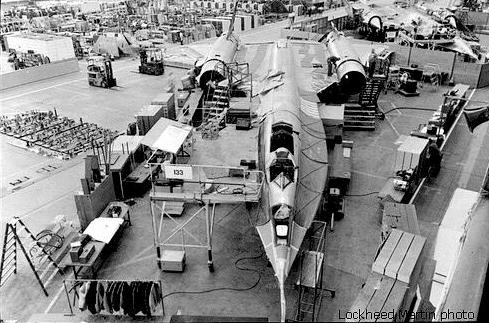
 This aircraft was lost on approach to Groom Lake on 9 July 1964 following a Mach 3 check flight. On approach, the flight controls locked up (a stuck outboard elevon servo valve), and Lockheed test pilot Bill Park was forced to eject at an altitude of 200 feet in a 45 degree bank angle. Pilot, Bill Park survived. The aircraft had less than 9 hours on it and photos of this aircraft are extremely rare. LAC #133 (939) flew 10 flights for 8.3 hours total flight time prior to the crash.
This aircraft was lost on approach to Groom Lake on 9 July 1964 following a Mach 3 check flight. On approach, the flight controls locked up (a stuck outboard elevon servo valve), and Lockheed test pilot Bill Park was forced to eject at an altitude of 200 feet in a 45 degree bank angle. Pilot, Bill Park survived. The aircraft had less than 9 hours on it and photos of this aircraft are extremely rare. LAC #133 (939) flew 10 flights for 8.3 hours total flight time prior to the crash.
The official report read:
"Aircraft No. 133 [S/N#939] was making its final approach to the runway when at altitude of 500 feet and airspeed of 200 knots it began a smooth steady roll to the left. Lockheed test pilot Bill Park could not overcome the roll. At about a 45 degree bank angle and 200 foot altitude he ejected. As he swung down to the vertical in the parachute his feet touched the ground, for what must have been one of the narrower escapes in the perilous history of test piloting. The primary cause of the accident was that the servos for the right outboard roll and pitch control froze."
60-6941 (M-21)
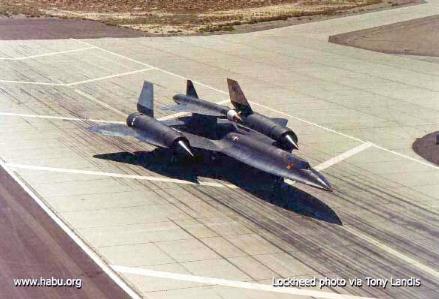
This was the second A-12 to be converted to an M-21 for launching the D-21 reconnaissance
 drone. During a flight test on 30 July 1966 for launching the drone, the drone pitched down and struck the M-21, breaking it in half. Pilot Bill Park and LCO (Launch Control Officer) Ray Torick stayed with the plane a short time before ejecting over the Pacific Ocean. Both made safe ejection, but Ray Torick opened his helmet visor by mistake and his suit filled up with water which caused him to drown. This terrible personal and professional loss drove Kelly Johnson to cancel the M-21/D-21program. This accident also prompted water survival training by the A-12 pilots based at Groom Lake. Under the supervision of 1129th SAS commander Col. Hugh Slater, the pilots, wearing their flight suits, were lifted high above the waters of Lake Mead on a parasail being towed by the United States Coast Guard. The training was quickly aborted when some of the fully suited pilots almost drowned after dropping from the parasail into the water.
drone. During a flight test on 30 July 1966 for launching the drone, the drone pitched down and struck the M-21, breaking it in half. Pilot Bill Park and LCO (Launch Control Officer) Ray Torick stayed with the plane a short time before ejecting over the Pacific Ocean. Both made safe ejection, but Ray Torick opened his helmet visor by mistake and his suit filled up with water which caused him to drown. This terrible personal and professional loss drove Kelly Johnson to cancel the M-21/D-21program. This accident also prompted water survival training by the A-12 pilots based at Groom Lake. Under the supervision of 1129th SAS commander Col. Hugh Slater, the pilots, wearing their flight suits, were lifted high above the waters of Lake Mead on a parasail being towed by the United States Coast Guard. The training was quickly aborted when some of the fully suited pilots almost drowned after dropping from the parasail into the water.
 |
 |
 |